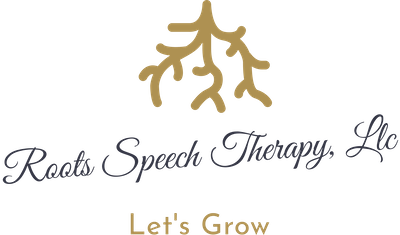Speech, Feeding, Orofacial Myology
Custom, Private and Effective
Articulation/Phonological Disorders
Motor Speech Disorders
Receptive Language
- Expressive Language
- Feeding and Oral Motor Development
- Tethered Oral Tissues
- Tongue Thrust
- Resting Oral Posture
- Swallowing
- Thumb/Finger Sucking

Orofacial Myofunctional Disorder
What is an OMD?
Orofacial myofunctional disorder refers to improper function of the facial muscles, tongue and mouth. OMDs may directly or indirectly affect facial growth and development, chewing, swallowing, speech articulation, occlusion, oral hygiene, stability of orthodontic treatment, facial esthetics and more. Several factors can contribute to OMDs, one being inherited muscle patterns. Another is airway obstruction.
Signs & Symptoms
Symptoms of OMDs
Symptoms of orofacial myofunctional disorders can be very obvious or happen over a period of time and be unclear. Certain habits or conditions can interfere with proper actions of orofacial muscles causing OMD. These muscles include cheeks, jaw, lips and tongue. When these muscles function incorrectly due to habits or conditions, it can lead to improper development. This atypical development causes the muscles to have incorrect adaptations and not work in balance which can cause a variety of problems.
Do you suffer from any of the following?
- Mouth Breathing
- Orthodontic Relapse
- Chronic Tension
- Mood Disorders
- Jaw Pain
- Toxic Oral Habits
- Tongue Thrust
Snoring
- Chronic Headaches
Grinding
Swallowing Difficulty
Poor Posture
Sleep Apnea
Tongue-Tie
Speech Problems
Signs & Symptoms
Symptoms of OMDs
Symptoms of orofacial myofunctional disorders can be very obvious or happen over a period of time and be unclear. Certain habits or conditions can interfere with proper actions of orofacial muscles causing OMD. These muscles include cheeks, jaw, lips and tongue. When these muscles function incorrectly due to habits or conditions, it can lead to improper development. This atypical development causes the muscles to have incorrect adaptations and not work in balance which can cause a variety of problems.
Do you suffer from any of the following?
- Mouth Breathing
- Orthodontic Relapse
- Chronic Tension
- Mood Disorders
- Jaw Pain
- Toxic Oral Habits
- Tongue Thrust
Snoring
- Chronic Headaches
Grinding
Swallowing Difficulty
Poor Posture
Sleep Apnea
Tongue-Tie
Speech Problems
- Our Program
Orofacial Myofunctional Program
Goals of the Program
Our Program is appropriate for children, teens and adults. Program goals are individualized and are meant to create new healthy oral habits. The benefit of healthy habits can include nasal breathing, a proper swallow pattern, favorable resting tongue position and preserving orthodontic results from this program.
This program is comprehensive and covers a variety of oral problems. This program helps reverse damaging habits, such as tongue thrust. This program can last from six months to a year. The objective of this program is to eliminate bad habits, demonstrate therapeutic facial exercises, develop proper lip seal and tongue placement and teach chewing and swallowing patterns to reinforce good habits. These goals will help the structures in the mouth stay in balance and habitualizing the learned behaviors is most important for long term success.
Speech Language
- Childhood
Apraxia of Speech
In order for speech to occur, messages need to go from your brain to your mouth. These messages tell the muscles how and when to move to make sounds. When a child has apraxia of speech, the messages do not get through correctly. The child might not be able to move their lips or tongue in the right ways, even though their muscles are not weak. Sometimes, the child might not be able to say much at all.
Some Signs and Symptoms
- Does not always say words the same way every time
- Tends to put the stress on the wrong syllable or word
- Distorts or changes sounds
Can say shorter words more clearly than longer words.
- Difficulty with fine motor skills
- Delayed language
- Problems with reading, spelling, and writing.
- Childhood
Apraxia of Speech
In order for speech to occur, messages need to go from your brain to your mouth. These messages tell the muscles how and when to move to make sounds. When a child has apraxia of speech, the messages do not get through correctly. The child might not be able to move their lips or tongue in the right ways, even though their muscles are not weak. Sometimes, the child might not be able to say much at all.
Some Signs and Symptoms
- Does not always say words the same way every time
- Tends to put the stress on the wrong syllable or word
- Distorts or changes sounds
Can say shorter words more clearly than longer words.
- Difficulty with fine motor skills
- Delayed language
- Problems with reading, spelling, and writing.
- Feeding and Oral Motor Development
Feeding
Some children have swallowing problems, or dysphagia (dis-FAY-juh). Swallowing happens in three stages, or phases. A child can have a problem in one or more of these phases. They include:
How to determine if your child is a Picky Eaters vs. Problem Feeder?
- If you were to make a list of all of the foods that your child eats, how many foods would be on that list?
- Does your child eat the same food over and over, then suddenly stop eating that food? Will they accept that food again at some point in the future, or is that food typically lost?
- What happens if you put a new food on their plate?
- Do they eat at least one food from most nutrition (proteins, vegetables, etc.) and texture (purees, soft foods, chewy foods, etc.) categories?
- What does their plate look like at meals compared to the rest of the family’s?
- How hard is it for them to learn about new foods?
- How often has your child been reported as a “picky eater” at well-child check-ups?
Let’s Change Things
Orofacial Myology Programs has helped literally thousands of individuals, in dozens of countries, for over 50 years!
“Faith is fabulous. She goes the extra-mile to make sure you understand how you are progressing and will communicate with you to keep you fully informed.”

